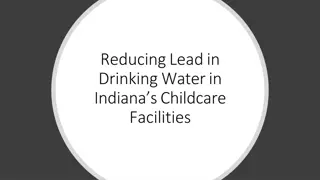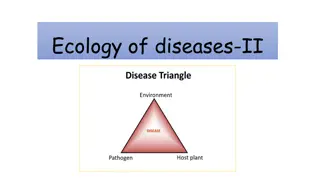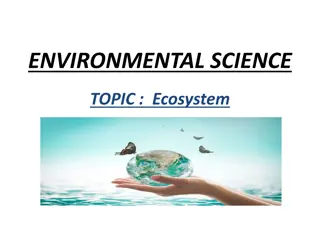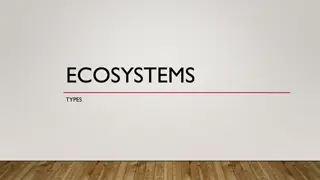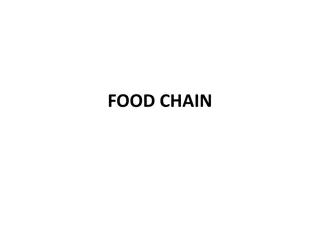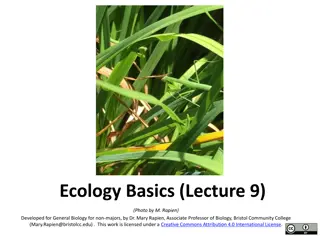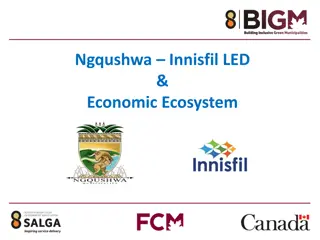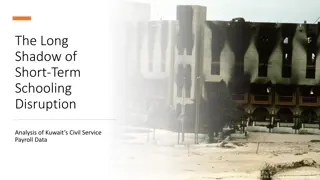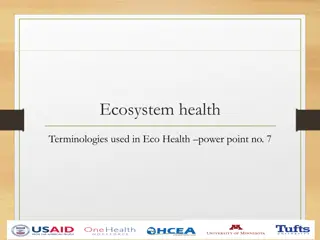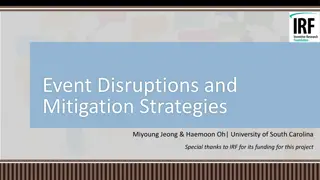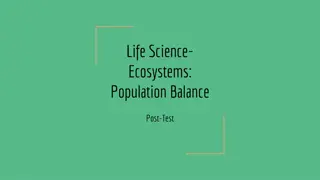Understanding Disruptions to Ecosystems and Human Impact
Evolution and ecosystem dynamics are shaped by interactions between organisms and their environment. Invasive species, unintended consequences, and human activities can disrupt ecosystems, leading to ecological changes. Examples include the impact of invasive species like zebra mussels in the Great Lakes and human-induced habitat changes. Understanding these disruptions is vital for conservation and sustainability efforts.
Download Presentation

Please find below an Image/Link to download the presentation.
The content on the website is provided AS IS for your information and personal use only. It may not be sold, licensed, or shared on other websites without obtaining consent from the author. Download presentation by click this link. If you encounter any issues during the download, it is possible that the publisher has removed the file from their server.
E N D
Presentation Transcript
UNIT 8-7 DISRUPTIONS TO ECOSYSTEMS
This all looks like review: Enduring Understanding: Evolution is characterized by change in the genetic make-up of a population over time and is supported by multiple lines of evidence. Learning Objective: Explain the interaction between the environment and random or preexisting variations in populations. A. An adaptation is a genetic variation that is favored by selection and is manifested as a trait that provides an advantage to an organism in a particular environment. B. Mutations are random and are not directed by specific environmental pressures.
ENDURING UNDERSTANDING Competition and cooperation are important aspects of biological systems. LEARNING OBJECTIVE 1. Explain how invasive species affect ecosystem dynamics.
Introduction of Invasive species: 1. The intentional or unintentional introduction of an invasive species can allow the species to exploit a new niche free of predators or competitors or to outcompete other organisms for resources. 2. The availability of resources can result in uncontrolled population growth and ecological changes.
Laws of Unintended Consequences a negative effect contrary to what was originally intended Invasive species:introduced species that become invasive and damage an ecosystem Examples: a. kudzu vine in southern US b. killer bees in South America c. rabbits in Australia d. Zebra mussels in the Great Lakes
Learning Objective: 2. Describe human activities that lead to changes in ecosystem structure and/or dynamics.
The distribution of local and global ecosystems changes over time. Human impact accelerated change at local and global levels: a.The introduction of new diseases can devastate native species. b.Habitat change can occur because of human activity.
Bio-Magnification Energy pyramid: toxins concentrate as they move up the food chain. DDT in Eagles - example
Learning Objective: 3. Explain how geological and meteorological activity leads to changes in ecosystem structure and/or dynamics.
Geological and meteorological events affect habitat change and ecosystem distribution. Biogeographical studies illustrate these changes. Examples: a.El Nino b.Continental drift c.Meteor impact on dinosaurs



